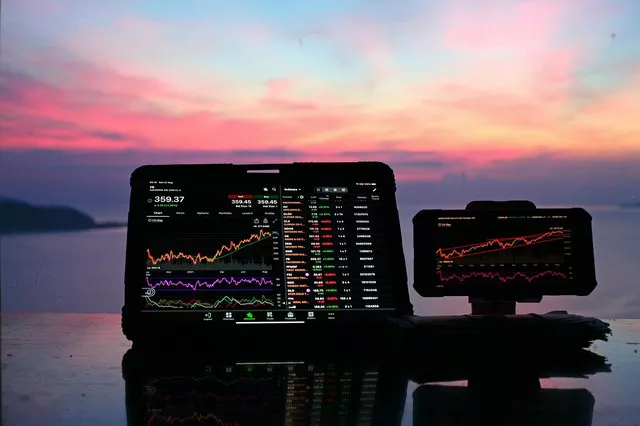Futures trading is a dynamic and exciting financial endeavor that attracts traders seeking opportunities for profit in the global markets. While some individuals are drawn to futures trading by the allure of potentially lucrative returns, others may question whether futures traders actually make a lot of money. In this article, we will delve into the world of futures trading and explore the earning potential of futures traders, examining the factors that influence profitability, common strategies employed, and the realities of trading in the futures market.
Understanding Futures Trading
Futures trading involves buying or selling contracts that obligate the parties involved to buy or sell a specified asset at a predetermined price and date in the future. These contracts, traded on regulated futures exchanges, cover a wide range of assets, including commodities, currencies, stock indexes, and interest rates. Futures traders aim to profit from price movements in the underlying assets by speculating on whether prices will rise (going long) or fall (going short) within a specified time frame.
Earning Potential in Futures Trading
The earning potential of futures traders varies widely and depends on several factors, including market conditions, trading strategies, risk management practices, and individual skill and experience. While some futures traders achieve substantial profits and generate significant wealth, others may struggle to achieve consistent profitability or sustain losses over time. Successful futures trading requires discipline, patience, and a deep understanding of market dynamics, as well as the ability to adapt to changing market conditions and manage risk effectively.
Factors Influencing Profitability
Several factors influence the profitability of futures trading, including:
1. Market Conditions: Futures markets can be highly volatile and unpredictable, with prices influenced by factors such as supply and demand dynamics, geopolitical events, economic data releases, and market sentiment. Traders must adapt their strategies to prevailing market conditions and identify opportunities for profit in both bullish and bearish environments.
2. Trading Strategies: The choice of trading strategy significantly impacts a trader’s profitability in futures trading. Some traders employ trend-following strategies, such as trend following or momentum trading, while others use mean-reversion strategies, such as mean reversion or range trading. The key is to develop a robust trading strategy based on sound principles and adapt it to changing market conditions.
3. Risk Management: Effective risk management is essential for preserving capital and minimizing losses in futures trading. Traders should implement strict risk management practices, such as setting stop-loss orders, diversifying their portfolios, and limiting position sizes to a small percentage of their total capital. By managing risk effectively, traders can protect themselves from large losses and increase their chances of long-term success.
4. Skill and Experience: Like any other profession, futures trading requires skill, knowledge, and experience to achieve consistent profitability. Successful futures traders possess a deep understanding of market dynamics, technical and fundamental analysis techniques, and trading psychology. They continually hone their skills through education, practice, and real-world experience, learning from both successes and failures along the way.
Common Strategies Employed by Futures Traders
Futures traders employ a variety of trading strategies to profit from price movements in the markets. Some of the most common strategies include:
1. Trend Following: Trend-following strategies involve identifying and trading with the prevailing market trend, whether it’s bullish or bearish. Traders use technical indicators, such as moving averages, trend lines, and momentum oscillators, to identify trend direction and enter positions in the direction of the trend.
2. Mean Reversion: Mean-reversion strategies involve trading against the prevailing market trend, anticipating that prices will revert to their historical average over time. Traders look for overbought or oversold conditions in the market and enter positions in anticipation of a reversal in price direction.
3. Breakout Trading: Breakout trading involves entering positions when prices break out of a predefined trading range or chart pattern, such as a triangle, rectangle, or head and shoulders pattern. Traders aim to capitalize on the momentum generated by the breakout and ride the trend for potential profits.
4. Scalping: Scalping is a high-frequency trading strategy that involves entering and exiting positions quickly to capture small price movements. Traders scalp the market for small gains multiple times throughout the trading day, relying on tight stop-loss orders and rapid execution to manage risk effectively.
Realities of Trading in the Futures Market
While futures trading offers the potential for significant profits, it also comes with inherent risks and challenges that traders must navigate. The futures market can be highly volatile and unpredictable, with prices influenced by a myriad of factors beyond the trader’s control. Additionally, trading futures requires a significant investment of time, effort, and capital, as well as a willingness to accept the possibility of losses. Traders must be disciplined, patient, and adaptable to succeed in the futures market and must continuously educate themselves, refine their strategies, and learn from both successes and failures along the way.
Conclusion
In conclusion, futures trading offers the potential for significant profits, but success is not guaranteed and requires skill, discipline, and a deep understanding of market dynamics. While some futures traders achieve substantial wealth and financial independence, others may struggle to achieve consistent profitability or sustain losses over time. The earning potential of futures trading depends on various factors, including market conditions, trading strategies, risk management practices, and individual skill and experience. By employing sound trading strategies, managing risk effectively, and continuously honing their skills, futures traders can increase their chances of success in the dynamic and challenging world of futures trading.

